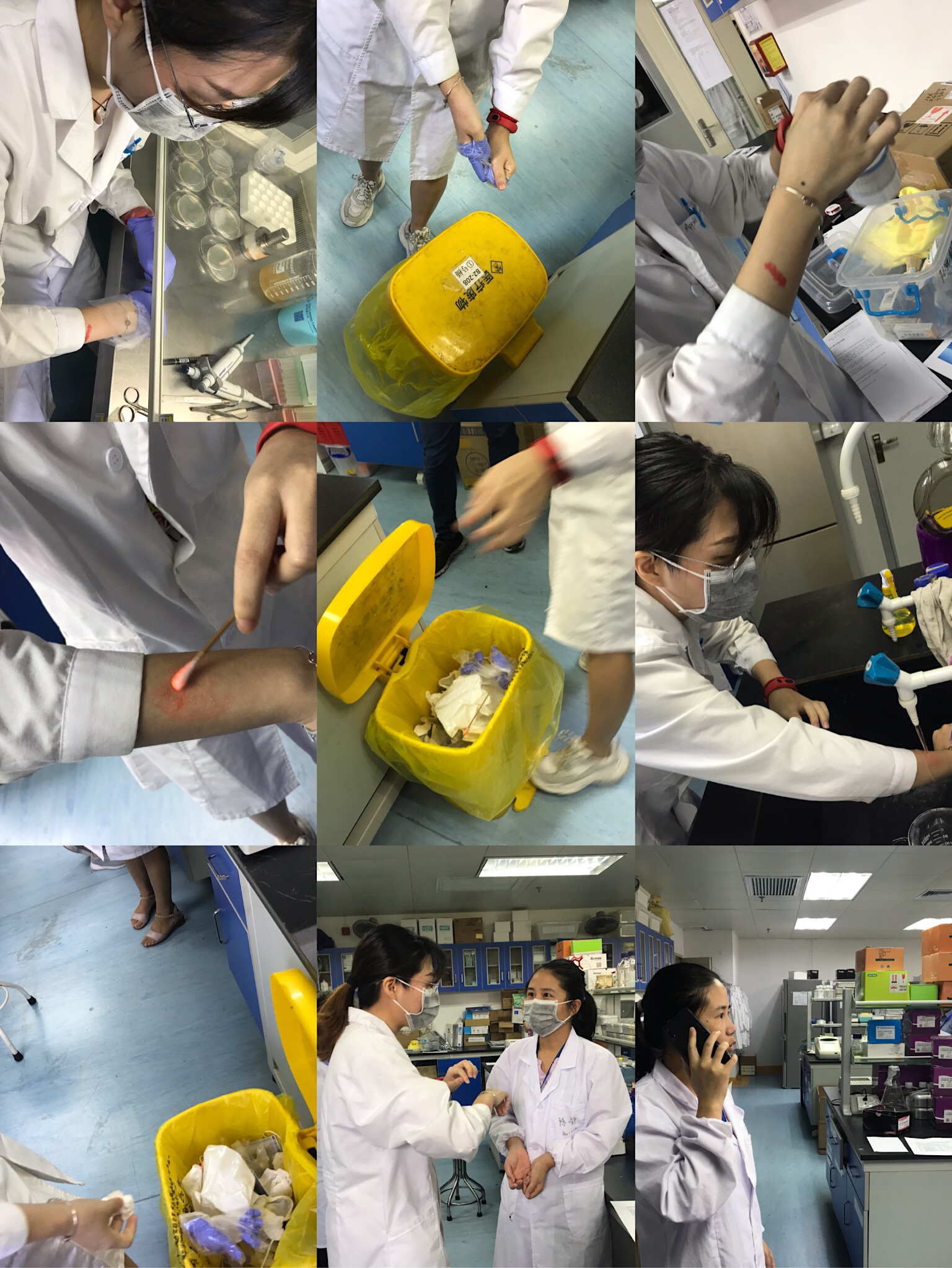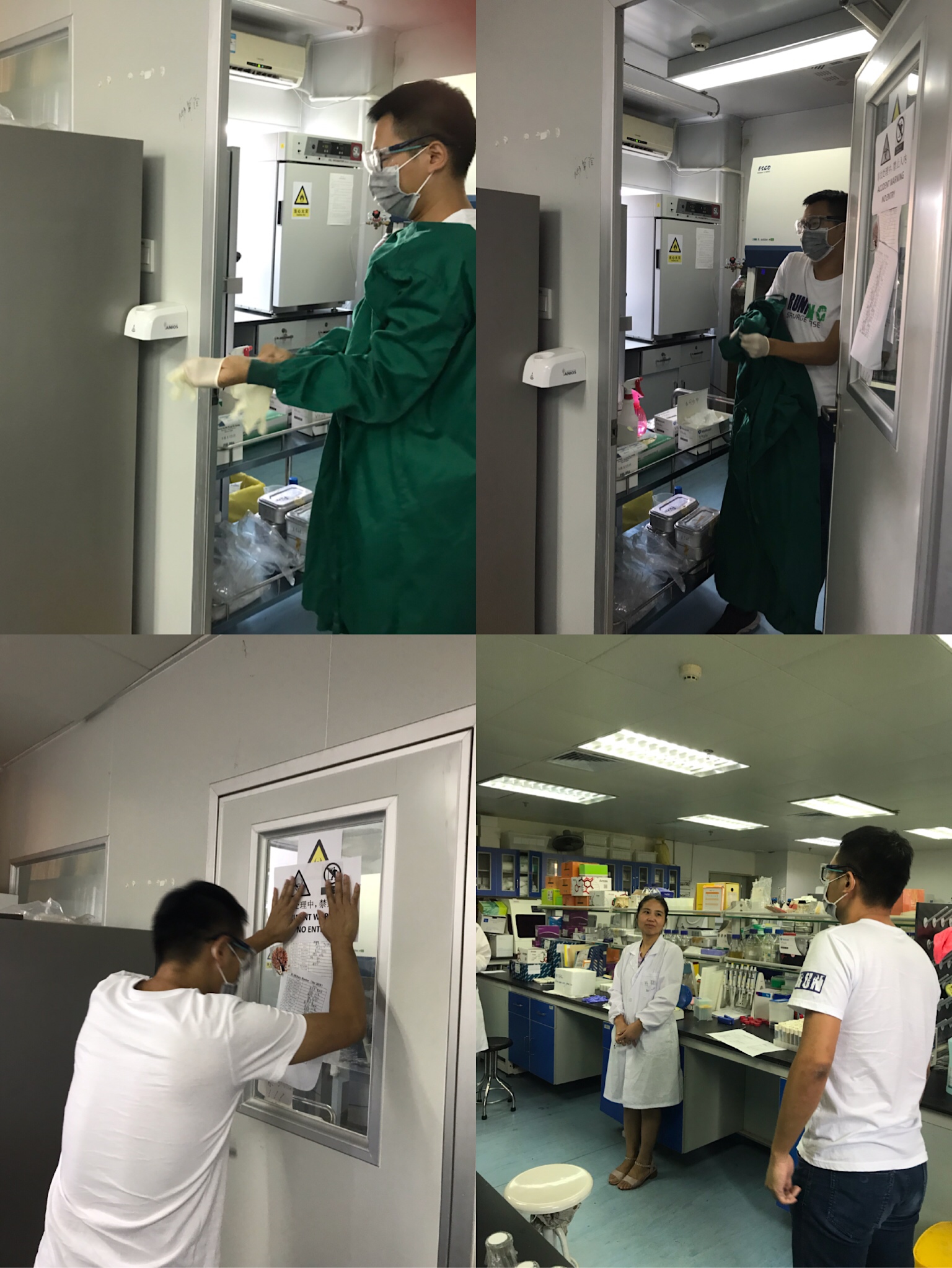On 27, 2019, the biosafety drill was successfully held at SFHI. It doesn’t matter how well the facility is built or how advanced the safety equipment is, if the laboratorians do not follow best practices when it comes to biosafety, facilities and equipment are all for naught. This is especially true at the BSL-1 and BSL-2 level, as facility and safety equipment requirements at these levels are minimal. Therefore, at BSL-2 level labs, biosafety relies almost exclusively on laboratory practices and procedures. Research has shown that the biggest predictor of incidents in laboratories is failure to maintain adequate training.

(traumatic exposure to infectious substances)

(skin or mucous membranes are exposed to infectious substances)

(process for inhaling infectious substances (aerosols))

(infectious substance spill treatment)